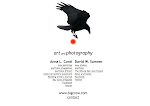
In my opinion the best photo book of the year is the little Blurb published book, "Look" by San Francisco painter Virginia Arana Greene.
Virginia's color compositions and treatment of form are so luscious that turning the pages of this book is like bathing in a tropical waterfall of visual perfection.
The most stunning thing about this body of work is that Virginia's preferred camera is the RIM BlackBerry Curve 8300: a cell phone. It's a simple case of the right tool in masterful hands.
The essence of the neighborhood she lives in has never been more exactly rendered. It is my neighborhood as well and "Look" is home.
Preview "Look" here: http://www.blurb.com/books/987725
















